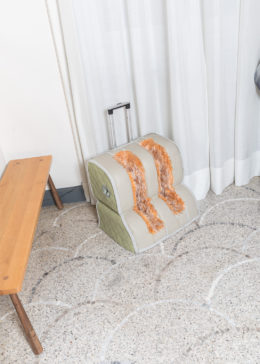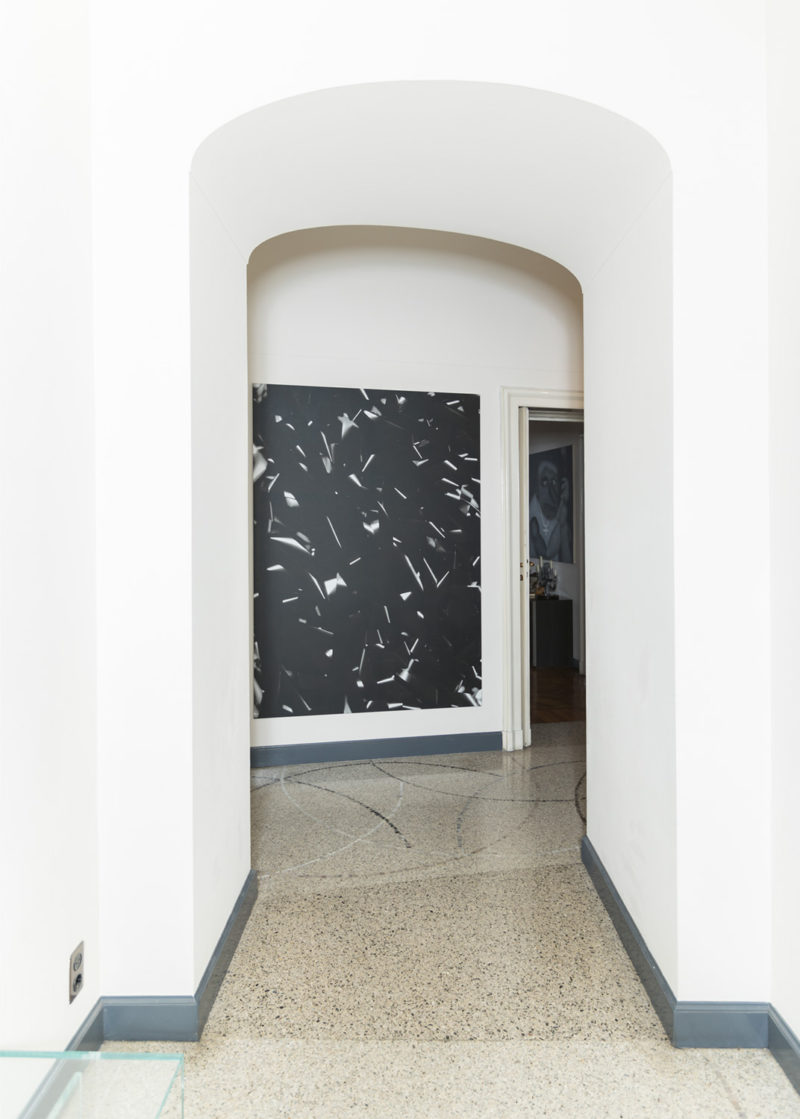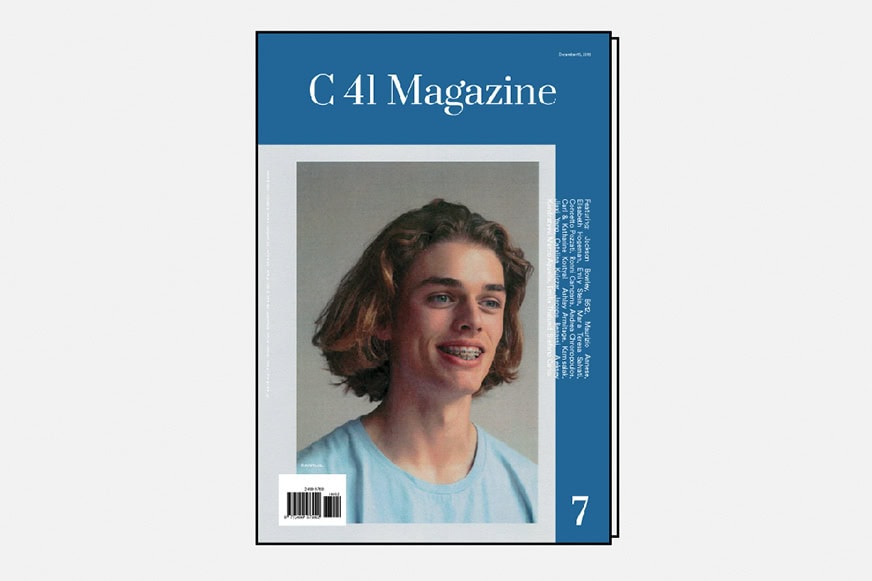C41 Magazine met the Kostyáls three times, always inside their beautifully furnished apartment in the heart of Milan, adorned with dozens of contemporary artworks.
Though working in different areas of the art market, both Carl and Katharine are renowned and respected art dealers, who recently moved from London to Milan; and when two such figures make and undertake such a choice, it is interesting to find out who they are.
Each time we visited, some of the artworks had changed position and others had newly arrived. Sitting on a red velvet sofa in their living room, Carl and Katharine were asked to develop an apparently simple theme, which in fact is not simple at all: describing the search for beauty, or rather what passes for beauty as we understand it today, in the post-Kantian sense, which might be more aptly described as having lasting meaning, in the world of art.
No one better than they could have answered this question: Carl, who has built a reputation for spotting and showing the best talents of his generation, and Katharine, who looks for artists who once occupied the limelight but for considerations of a personal, economic, political, gender or geographic nature have fallen out of the conversation, and aims to represent them to the international art world. In different ways, both of them are on an everlasting quest for beauty.
C.K. “The relationship between an artist and the art dealer is like a marriage, and I try to avoid divorce. Nobody wants to divorce.”Such a relationship is deeply intellectual, but it is often marked by a natural and universal inclination to avoid conflicts. It is a game based on do ut des where you, as an art dealer, should deliver what you have promised, and therefore it is important to only make promises you can fulfil. When an art dealer embarks on a professional relationship with an artist, he or she might feel like that relationship will and should never end, but it might. Just like a marriage.
The moment you enter inside an artist’s studio, the artist wants to talk about his work and often answers questions not asked yet: people will obviously listen to him. Eventually, you might end feeling moved by an artwork, but that emotion is just mirroring the artist’s emotions, not your own. In the world of art, it is important to buy with the eyes, and not with the ears.
People that live the world of art from the outside, as simple spectators, don’t have to worry about the quality of such relationships, but even those who are inside the market, that have to deal directly with the artists, should mind such personal characteristics only up to a point.As mentioned, Katharine usually works with artists who have long experience, and with such knowledge comes wisdom. As a beauty seeker, this opportunity leads Katharine to the great joy of being able to work with people that are mainly interested in realising a great exhibition rather than having loaded expectations. In the world of art, the final outcome is what really matters, and the actual quality of it wins over a fondness for the artist, even if that is always desirable and appreciated.
All the chit-chat done in a studio could be cut down to a very simple action: buying. There is no better approval than buying.
K. “Buying nothing is just like saying you like nothing.”
The purchase is a pure act of appreciation. That is true only if your approach is similar to Carl’s. Some collectors haphazardly amass many works, making the choice about their life and what they like without investigating and studying the artist properly. The choice is another key element in the hunting process, but as Carl says, if you aim to be known as the guy that looks for beauty, for which read lasting satisfaction, you cannot buy everything, you have to make choices. Hunting for a great artwork, a 10 out of 10, is like chasing the perfect storm; eventually, you just end up in the middle of it. That is the moment when a big window of opportunity opens up, and you must be ready. The same logic has to be applied on the other way around too. It, unfortunately, happens that good and capable artists miss the chance to properly show their value. This is precisely the type of hunt that Katharine is interested in. Either for economic reasons or for historical conditions, there are great talents ready to be re-discovered and brought to the exposure they deserve.
One of the many artists Katharine works with who clearly embodies this concept is the Hungarian doyenne of the neo-avant garde, Dóra Maurer.
K.K. “Dóra is an incredible artist who has been making work since the 1960s. Initially known for her experimental film-making and photography, for the last thirty years she has concentrated on geometric painting, using a strictly reduced palette of eight colours. She is also an active curator, and she has been the catalyst for many young artists’ careers from eastern Europe. Her work started to attract curatorial interest from the West in the mid to late 1980s but it is only recently that a more broader public has become aware of her practice, and I like to think that the exhibition of her work from the 1960s to the present that I staged in London at White Cube has made a meaningful contribution to that awareness.”
Eventually, whether you are looking for young emerging artists, or for talents that have remained hidden for many years, the final aim is similar: finding the best one.
C.K. “Art dealing is pretty much like staying still, out in the cold, observing a herd of horses and trying to understand which is the best one.”
Though the metaphor is strong and clear, it should be added (as Katharine did) that in today’s market you cannot just wait for good artists to show up; the only place where this might be still possible is New York City, where anything of worth eventually shows up, but it is an environment that creates also a lot of confusion.
C.K. “This world got way too big.”
The world of art is as charming from the outside as it is knotty from the inside. As Carl says, it is game that you have to play by yourself.
C.K. “You won’t be a friend to everybody. You can’t. That is not the reason why you get in to this game; you do it because you want to state a point of view. Your own. The big issue though is that everybody wants to have their own point of view.
As soon as a trade opportunity appears, a new market niche comes up, and all of a sudden, things that were ugly are now considered beautiful, just thanks to that new buying-selling balance. But eventually, even in the art market, there is a natural levelling of what is considered beautiful, or rather of lasting resonance.
C.K. “When it comes to art, nobody seems to understand that some are better than others. Full stop.”
This may sound like a bold statement, but it is not. People are driven to think that art is strongly based on personal taste, but it is not. There is unmistakably good art, which each of us can or cannot appreciate, but it will still be a 10 out of 10. Hunting for such a treasure is of course incredibly difficult; Carl believes that out of two thousand works, only twenty might be considered as a truly top notch. Even in the history of art, as Katharine adds, each artistic trend is mainly associated with one or two artists, not twenty. That is because they were the best, objectively superior to everybody else. The game does not end with catching a good artist, but goes on with a quest to find, and buy, their best work.
Carl Kostyál deals with contemporary art, and focuses on young and often emerging artists, mainly because, as he says, it is more fun.
C.K. “I enjoy myself more on the field, though nowadays I travel less, and therefore I see less.”
Everybody is strictly bound to his or her own timeframe, which is nothing less but the hunt field where this pursuit for beauty takes place. Our common fate is to have a naturally strong engagement with our own generation and hence an increased distance of understanding with those that follow. When our network ages, so do our connections to things, and we can relate and understand what’s outside our timeframe, only up to a specific point.
The contemporary art market has evolved and keeps on evolving rapidly. The art world has become much bigger than it has ever been, and the points of interest shift fast, depending on where the money is and goes. The artists’ lives and practices have adapted and changed from what used to be when they were probably living in a quieter and less hectic environment, and they were not taken over by the weight of success, blooming in a very short time.
K.K. “Today in New York City, the artists live just like athletes. They are called to produce more and more work, because people like them, the market likes them, and it takes a brave artist to diverge from their ‘commercial’ style and try out new ideas, without care for their buying public.”
The real challenge in the life of an art dealer is to understand what is beautiful when it is not “listed” yet, when no catalogue has been made yet; when hunting for great contemporary art pieces, or looking for hidden talents, this happens every time.
C.K. “It is easy to address something as beautiful when it has already been indexed. The benefit of intellectual hindsight helps people to understand and to calibrate and contextualise what they are looking at, but for me, when I see an artist’s work for the first time, I am happy that I get it: if everybody gets it first time, it is game over!”
It might take a long time, but how beautiful is to eventually stand in the midst of a perfect storm.
This story is featured on C41 ISSUE 7 Bellissimo.










